
Station Name: WILLESDEN JUNCTION
|
| Date opened: | 1.9.1866 (Kensington platforms 2.9.1867) |
| Location: | At end of approach road from Old Oak Lane |
| Company on opening: | London & North Western Railway |
| Date closed to passengers: | Still open |
| Date closed completely: | Still open |
| Company on closing: | Still open |
| Present state: | Still open |
| County: | London |
| OS Grid Ref: | TQ218829 |
| Date of visit: | 25th July 2009 |
On 1st September 1866 Holsden was replaced by Willesden Junction at a point where the West London Line and the North & South Western Junction Railway diverged. Initially trains from the West London Line had to reverse out of the station. To overcome this a new end on junction with the Hampstead Junction Railway was made on 2nd September 1867 with a bridge and platforms over the main line forming the High Level station. The original low level platforms were called Willesden Junction (Main Line). Initially the station was very complex with two sets of high level platforms which were quite separate from each other. There was a 30 minute service into the city from both sets of platforms and passengers were given no indication from which platform the next train would be leaving. With its labyrinth of entrances and passages the station was given the nickname "Bewildering Junction" or "The Wilderness" To overcome this confusion, the station was rebuilt with a single group of high level platforms opening on 12th August 1894 with an extra line and platform added to the high level station for use by Earls Court trains. This was used until 1940 and demolished in the mid 1950's. On 15th June 1912, Willesden Junction New was opened to cater for electric services to Watford, this was effectively an addition to Willesden Junction Main Line. Bakerloo Line trains also used this station from 10th May 1915. The New station consisted of two outer through platforms and two inner bay platforms at the London end. The bay platforms were originally longer (sufficient for a four-coach Bakerloo train when such trains were used outside peak times) but were shortened in the 1960's when a new toilet block was installed. West London Line trains used both the high level and low level platforms. After WW2, the station was in a very dilapidated state and the high level platforms rebuilt as a single island in 1956/7. In 1961 the main line station had 7 platforms and 2 bays but was only served by 28 suburban trains. The main line platforms were closed on 3rd December 1962 on the electrification of the West Coast Main Line and the platforms were removed during electrification work when some realignment of the tracks also took place to ease the curvature leaving just the adjacent platforms of Willesden Junction New. Today the high level and low level platforms are collectively called Willesden Junction. The low level platforms consist of an island platform, with outer faces as platforms 1 and 3 and one face of the east-facing two-platform bay as platform 2, the other face of the bay now has no track. Platforms 1 and 3 are used by the Bakerloo line services and London Overground services between Euston and Watford Junction. The high level platforms 4 and 5 serve the North London Line and the West London Line; trains on the latter reverse in a siding to the north of the station on the North London Line. Additional source: Wikipedia and A Regional History of the Railways of Great Britain Volume 3 Greater London by H.P. White. Published by David & Charles 1971 ISBN 0 7153 5337 3 BRIEF HISTORY OF THE WEST LONDON LINE
The Birmingham, Bristol & Thames Junction Railway was authorised by an Act of Parliament of June 1836 with powers to buy the canal and to build a railway northward to the London and Birmingham Railway at Willesden across the proposed route of the Great Western which opened to Bristol in 1838; thus creating a through route mainly for freight traffic from Bristol and Birmingham to the River Thames, the capital's main commercial artery. The directors of the new company expected the Great Western and the London & Birmingham to use their proposed new line as the most convenient route to the Thames. They also hoped the line would generate passenger revenue from the L & B and GWR if it was extended from their proposed southern terminus at Kensington to a new terminus near Hyde Park Corner, the gateway to London.
Having purchased the ailing Kensington Canal Company for £36,000 the new company was itself in financial difficulty and a second Act of Parliament was required in 1840 to raise extra capital; at this time the company's name was shortened to the West London Railway. Trials to show-off the potential of the atmospheric railway system were held from 1840 to 1843 on a half-mile section of track adjacent to Wormwood Scrubs, leased to the system's promoters; but in the event, the line proceeded with conventional power. The 2.5 mile single line officially opened between West London Junction, Willesden and Kensington on 27 May, 1844, with regular passenger services beginning on 10 June with a 30-minute interval service. By this time the L & B and GWR had chosen their London termini and were no longer interested in using the West London Railway. The terminus at Kensington was some distance from Kensington itself and any potential commuters, and the line ran through open country throughout; from the outset it was not a commercial success.
It is said that the first train had one passenger with little improvement in the following months. In September and October 1844 passenger receipts were only £15 10s per month and according to the company minutes of 25th October 1844 "The 5.55pm from Kensington was delayed so long at the crossing that it didn't reach West London Junction until 7pm and the solitary passenger had missed the last train to Harrow." The minimal level of passenger returns became such a regular target of Punch magazine that the line started being called Punch's Railway "leading from nowhere to nowhere". The company blamed the failure of the line on the refusal of the L & B and GWR to stop their to stop their long distance trains at the respective junctions with the West London and with losses of £50 per week the line was forced to close after the last train on 30 November 1844 after less than six months.
The northern end of the Kensington Canal was infilled in 1861 with much of its course being used for the WLER. The new double track line between Willesden and Clapham Junction opened to passenger traffic on 2 March 1863. Kensington & Shepherds Bush (renamed Uxbridge Road) stations were rebuilt a little to the south of the original sites with new stations provided at Chelsea and Battersea and a further station opening at West Brompton on 1st September 1866. A third rail was laid to allow broad gauge trains to use the extension but this had limited use with broad gauge passenger trains running into Victoria until October 1866 and freight trains running to Chelsea Basin until November 1875. Unlike its predecessor, the West London Joint Railway as it became known, was an immediate success. A spur from the Hammersmith & City line at Latimer Road opened on the 13th July 1864 which gave Great Western trains direct access to the line from the London direction. On 1st January 1869, the London & South Western Railway opened a line from Richmond to a junction with the West London line just north of Kensington Station and on the 12th April 1869 a connection between the West London Line and the District Railway was made at West Brompton and a northbound spur from the District Railway to Kensington was opened on 1st February 1872. There was also a connection to the District Railways Lillie Bridge Depot. On 1st June 1877 the District Railway was extended a short distance west from its station at Hammersmith to a junction with the 1869 LSWR's Richmond Branch.
The new multiplicity of connections led to considerable development of transfer freight traffic between the northern and southern lines while the former also opened depots south of the river. In spite of the equivalent possibilities for through passenger traffic, this didn't begin until 1904 and never attracted the expected passenger revenue.
During the 1923 Grouping the West London Railway nominally retained its independence although the West London Extension Railway was absorbed. Despite the early heavy passenger numbers use of the line dwindled with the construction of the deep-level underground network and the introduction of trams and motor busses which provided a quicker and more convenient route for commuters to reach central London. Local north-south passengers also deserted the line in favour of road transport. WW2 hastened the demise of the now uneconomic passenger services. Following severe bomb damage, the advertised steam services from Clapham Junction - Kensington ceased on 20th October 1940 and the electric services, LMSR from Willesden and LT now from Edgware Road on 3rd and 20th October respectively. The line remained in service as an important freight link. After the war only the short section of line between Kensington and Earls Court was reopened for passenger traffic with the service being provided by London Transport’s District Line from 19th December 1946, but only when there was an exhibition at Olympia. A workmen's diesel hauled passenger service ran between Clapham Junction and Kensington with two trains in the morning rush hour and two in the evening. This service received little promotion and most people were unaware of its existence. Most of the conductor rails between Kensington and Willesden were removed between 1946 - 1952.The line remained busy with 30 freight trains in each direction daily and holiday excursions and special cross country workings were common. On 24th May 1966 the West London Line received a new lease of life with the opening of the Motorail terminal at Kensington, with car-transport services to a wide range of destinations in Scotland, Wales and the West Country. These services ceased in 1988 and the Motorail terminal closed. It’s now used as a covered car-park and the reception area is now the booking hall and ticket office.
The line is electrified at 750 V DC third rail from the south to the North Pole depot, where the electrification changes to 25 kV AC overhead. The work was carried out as part of Channel Tunnel infrastructure improvements in 1993. Local trains run every half hour and are operated by London Overground. Hourly Southern trains run between East Croydon (formerly Brighton) and Milton Keynes (previously Watford Junction), not stopping at Willesden Junction. The twice daily cross country services from Brighton to Birmingham New Street via Reading was discontinued in December 2008.The line still carries considerable freight traffic and was used by Eurostar trains between Waterloo International and the depot at North Pole Junction prior to November 2007. Recent timetable changes have meant that some London Overground peak hour trains now continue beyond Willesden Junction onto the North London Line to Stratford.
Click on the station name to see other stations on the West London Line: See also Hammersmith (Grove Road) & Shepherds Bush on the |
junction_old4.jpg)

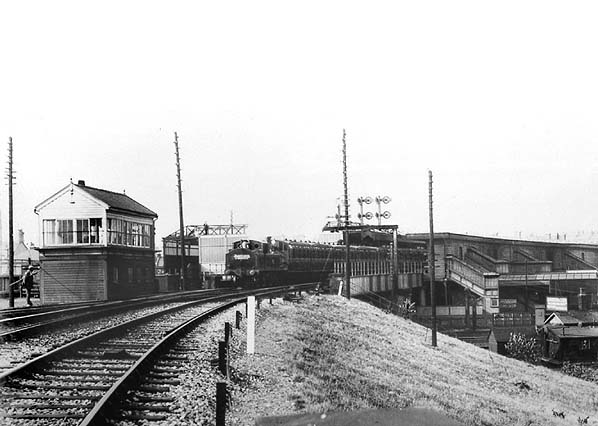
junction_old1.jpg)
Copyright photo by H C Casserley
junction_old5.jpg)
junction_old3.jpg)
Willesden Junction High Level Station looking north in December 1962
junction_old6.jpg)
Reproduced under Collective Commons Licence from Wikimedia Commons
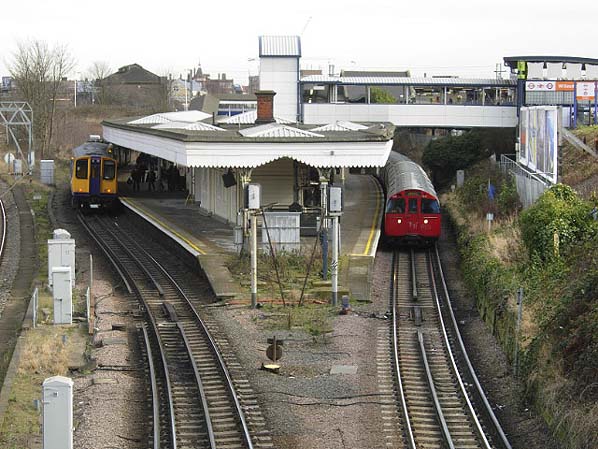
Photo by Stephen McKay reproduced under Creative Commons Licence from Geograph
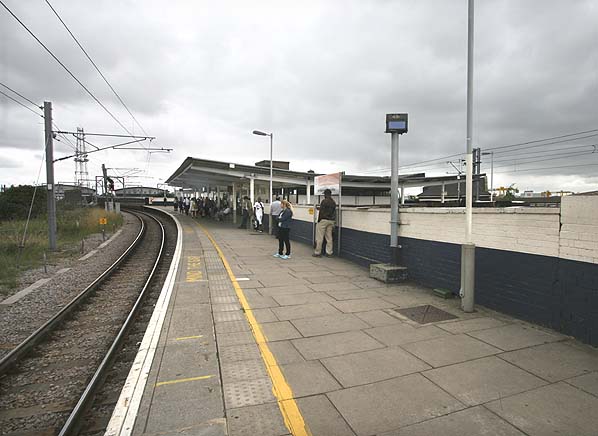
Photo by Nick Catford
Click on thumbnail to enlarge

|
| Last updated: Friday, 26-May-2017 10:02:32 CEST | © 1998-2009 Disused Stations |


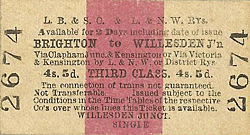
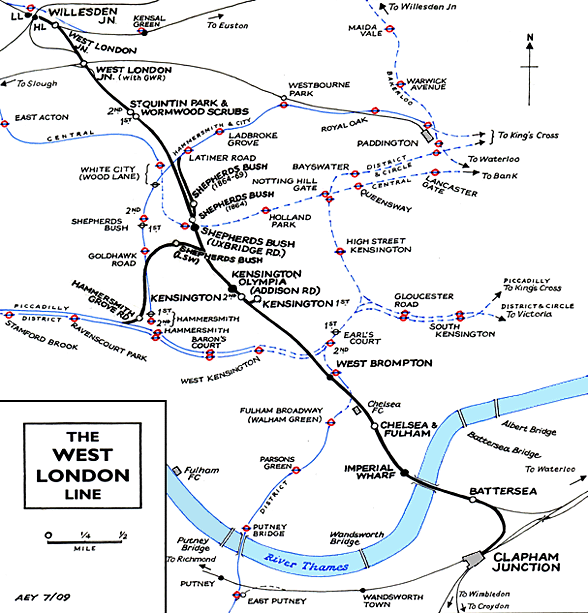

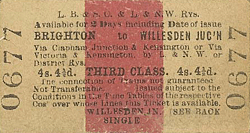



junction_thumb8.jpg)
junction_thumb7.jpg)





 Home Page
Home Page